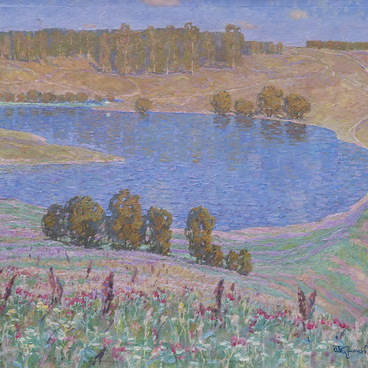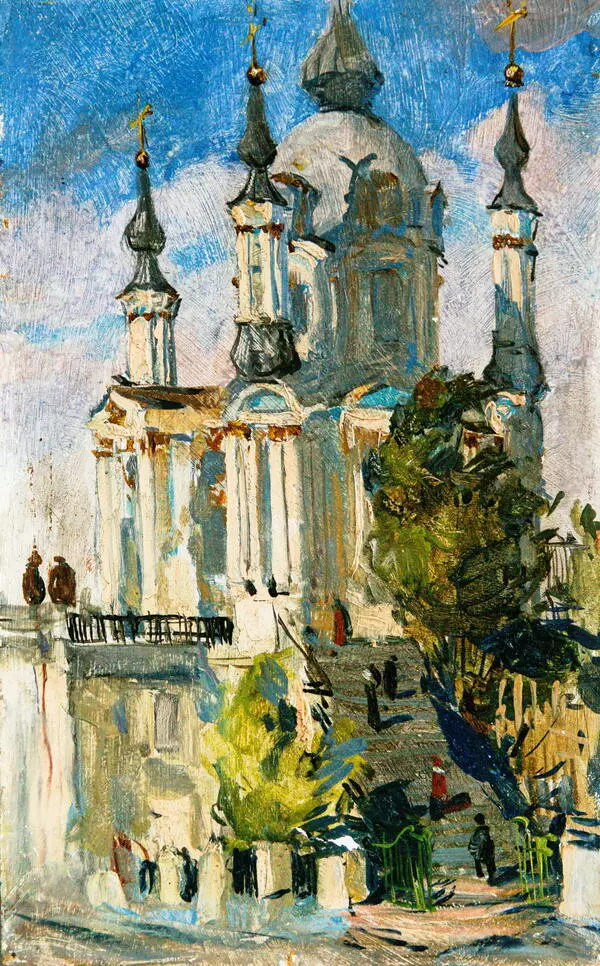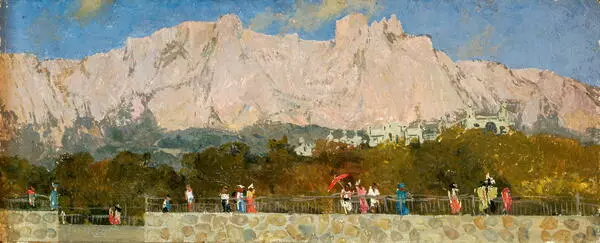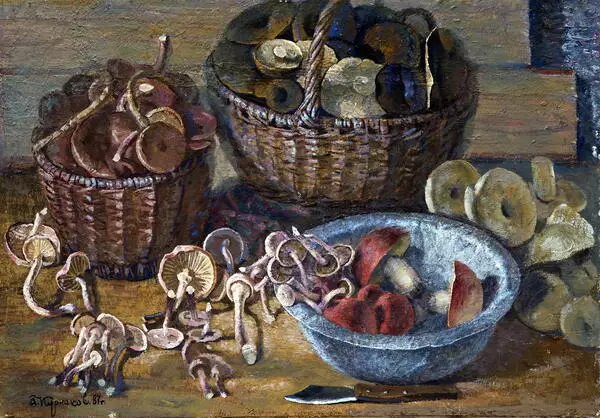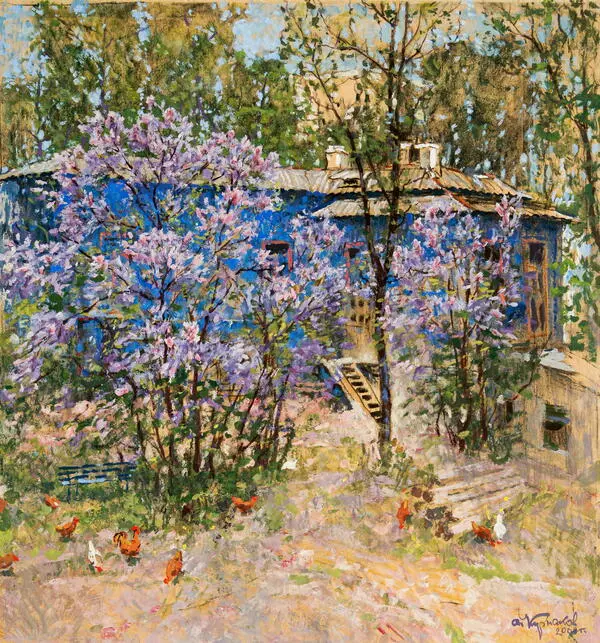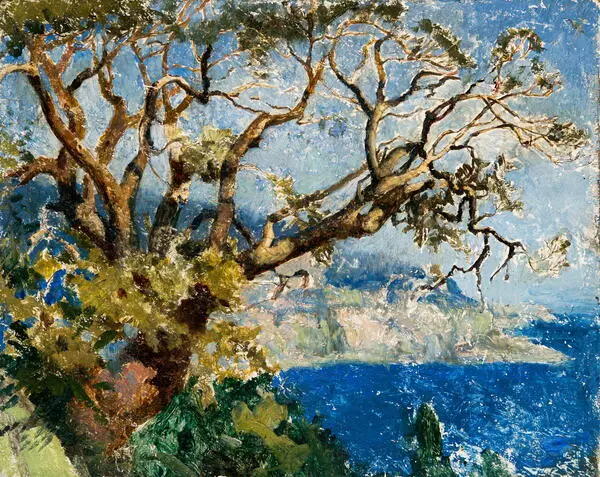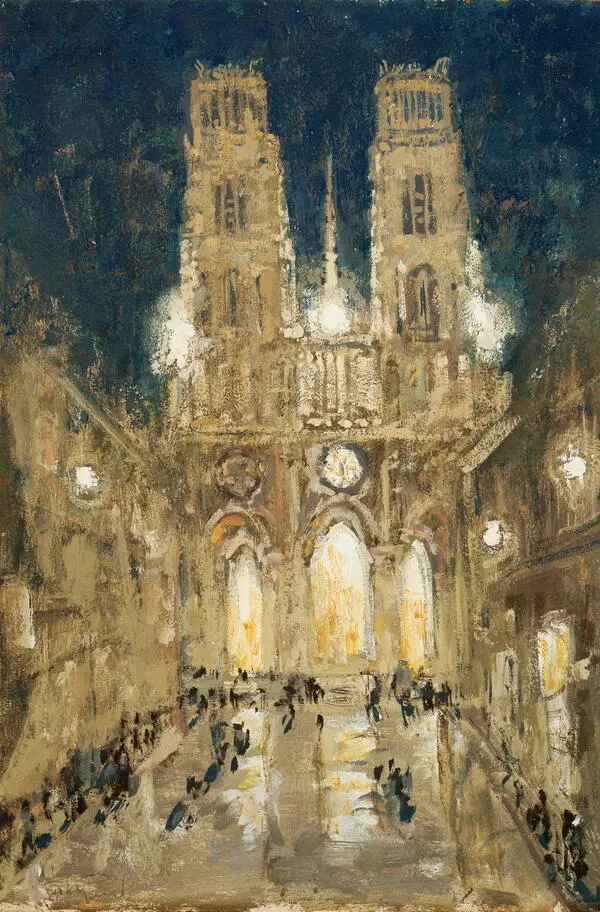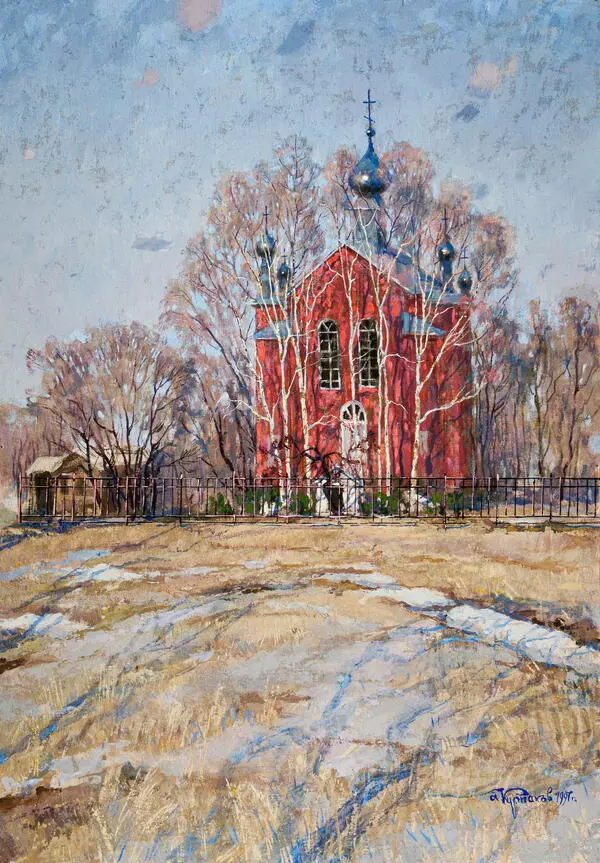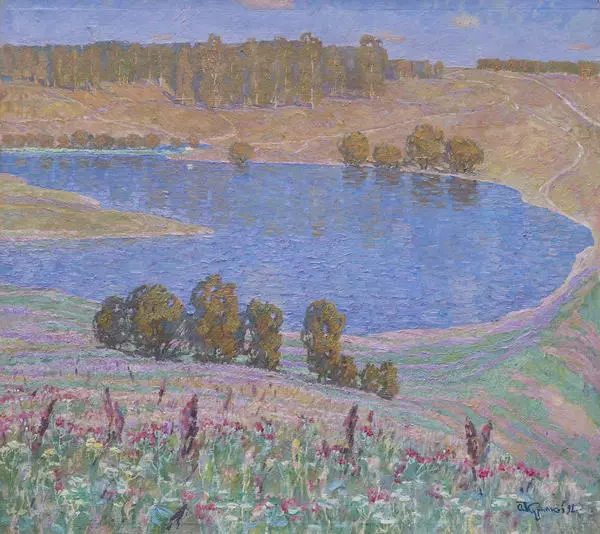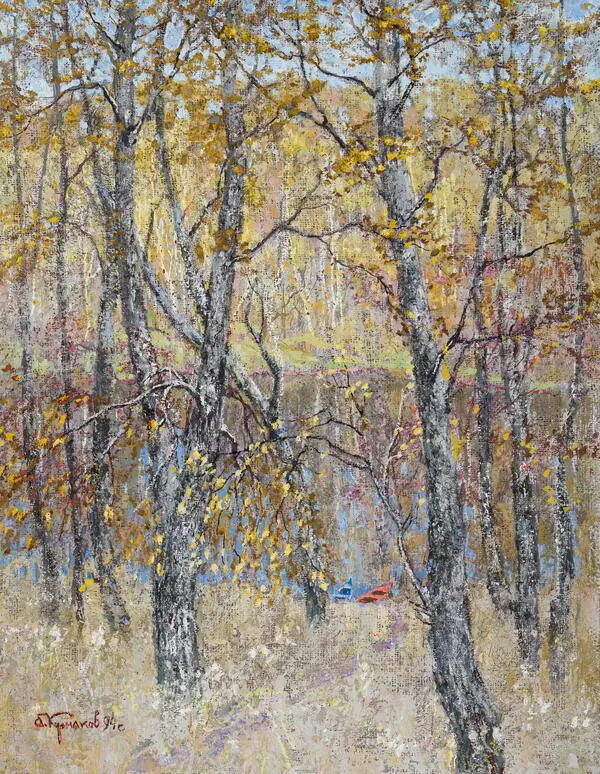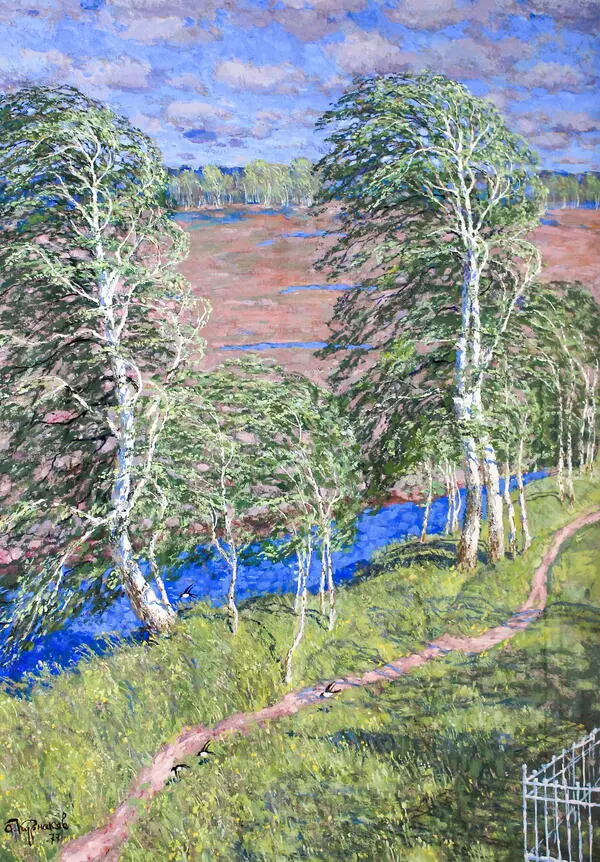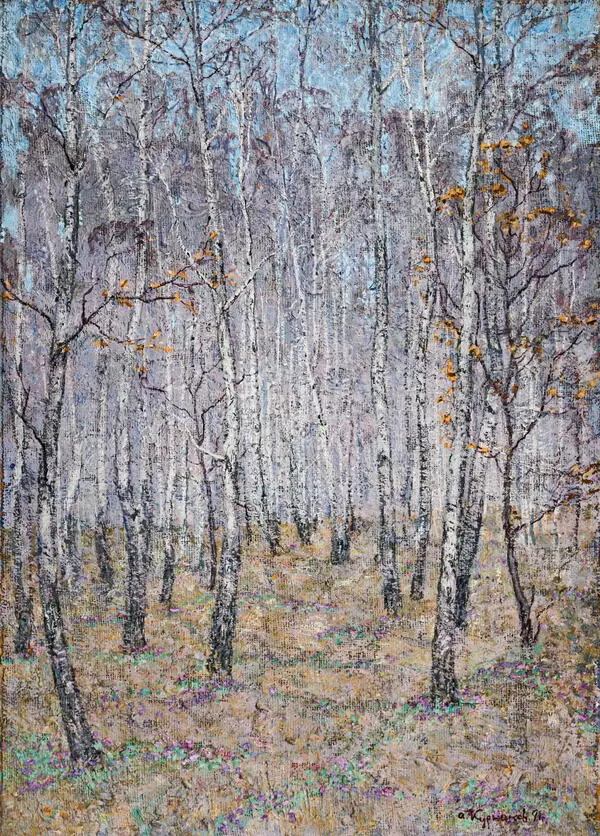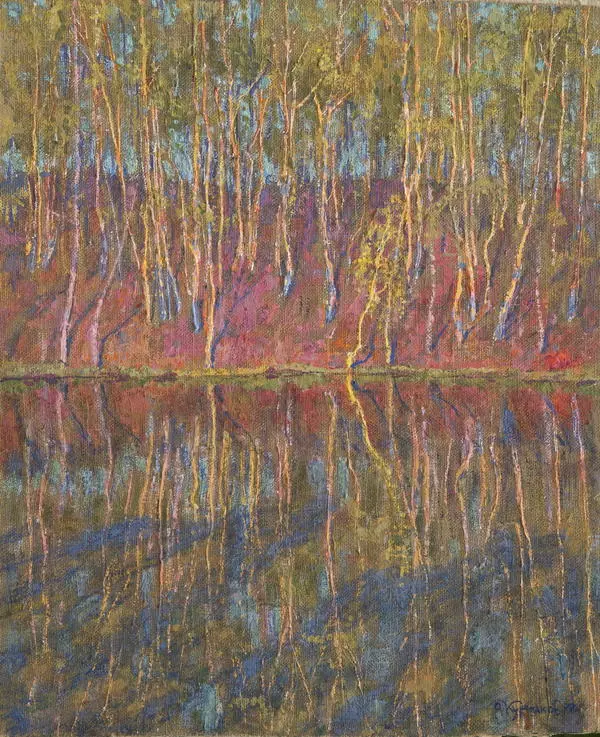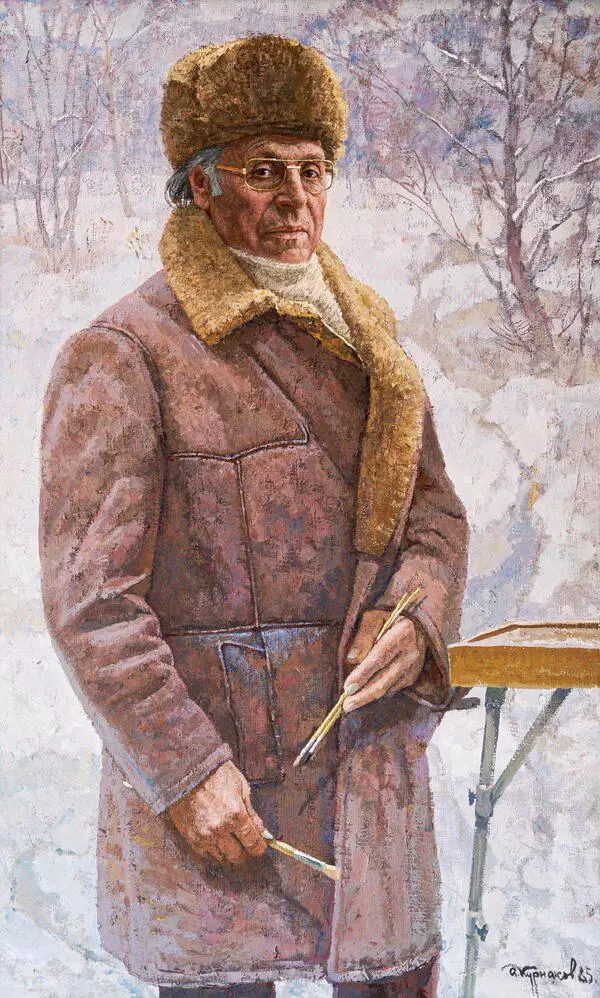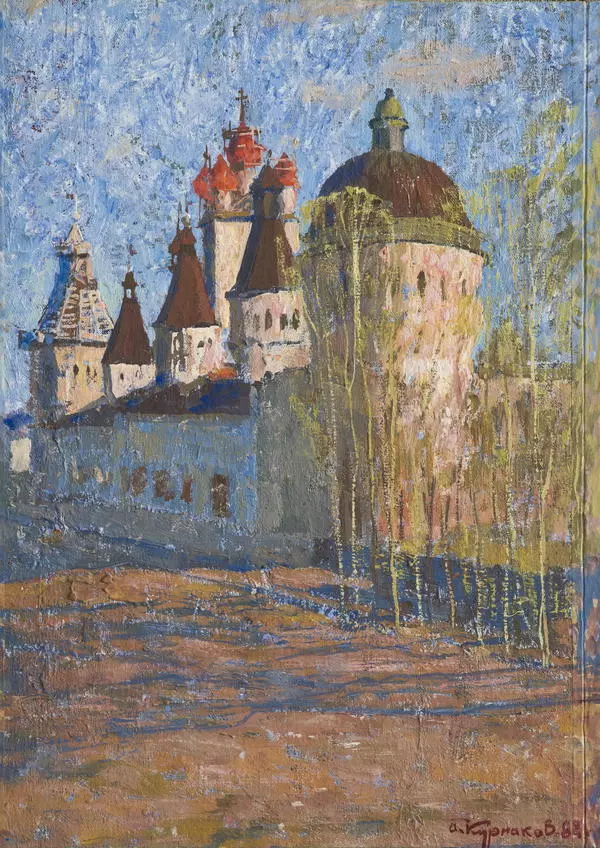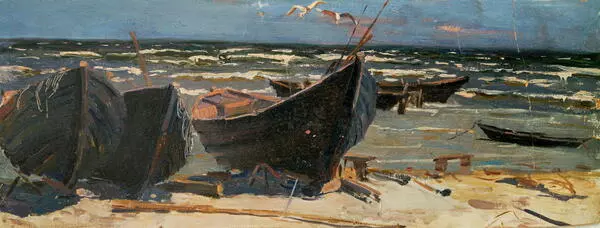The painting depicts a spring panoramic landscape - early morning in the beginning of April. A wide space of fields stretched out in front of us, located one after another parallel to the edge of the picture. In the foreground are horizontal stripes of red stubble with the remains of straw from last year’s crops. This is the edge of the field, behind it is already plowed black soil, then a strip of sprouts of pale green winter crops, then again, a strip of resting land, and again a green strip of winter crops, and so on to the very horizon.
In the background, on the left, a strip of birches smoothly descended in an even line and then rose again along the hilly terrain. On the right, the same strip of forestation with a rounded smooth line stretched into perspective. These stripes on the horizon clearly divided the earth and the sky.
The sky occupies more than half of the composition, covering the earth with a blue dome. The artist pays special attention to the sky, it is this that creates a solemn mood in the landscape. Fleecy clouds fan out from the middle of the horizon, creating an arabesque picture of movement in the cold blue morning sky.
A crop-duster took off over the field on the left, leaving a white trail behind. But the sound of the engine of a flying plane is overridden by the song of a lark. “Morning Lark” - this is how the author called his picture. In the blue sky, the wonderful singing of this first spring bird sounds. Probably an observant artist, working on a sketch early in the morning, listened to the songs of a lark for hours. We do not see this bird in the sky, but we know that the higher the lark soars, the louder its songs are heard over the fields, proclaiming that winter is over, and springtime is coming into its own.
The skylark chooses open spaces for its nest, where wheat or oats grow, which birds feed on. Once heard, the song of the lark remained for a long time to sound in the soul of the artist, and then in his canvas, the plot of which conveys the boundless breadth and expanse of the Russian land. In his paintings, a person is always invisibly present: a pilot in a flying plane, a tractor driver who plowed the land, a combine operator who will collect a heavy crop from the field. And the artist praises all of them solemnly in his work.
In the background, on the left, a strip of birches smoothly descended in an even line and then rose again along the hilly terrain. On the right, the same strip of forestation with a rounded smooth line stretched into perspective. These stripes on the horizon clearly divided the earth and the sky.
The sky occupies more than half of the composition, covering the earth with a blue dome. The artist pays special attention to the sky, it is this that creates a solemn mood in the landscape. Fleecy clouds fan out from the middle of the horizon, creating an arabesque picture of movement in the cold blue morning sky.
A crop-duster took off over the field on the left, leaving a white trail behind. But the sound of the engine of a flying plane is overridden by the song of a lark. “Morning Lark” - this is how the author called his picture. In the blue sky, the wonderful singing of this first spring bird sounds. Probably an observant artist, working on a sketch early in the morning, listened to the songs of a lark for hours. We do not see this bird in the sky, but we know that the higher the lark soars, the louder its songs are heard over the fields, proclaiming that winter is over, and springtime is coming into its own.
The skylark chooses open spaces for its nest, where wheat or oats grow, which birds feed on. Once heard, the song of the lark remained for a long time to sound in the soul of the artist, and then in his canvas, the plot of which conveys the boundless breadth and expanse of the Russian land. In his paintings, a person is always invisibly present: a pilot in a flying plane, a tractor driver who plowed the land, a combine operator who will collect a heavy crop from the field. And the artist praises all of them solemnly in his work.
